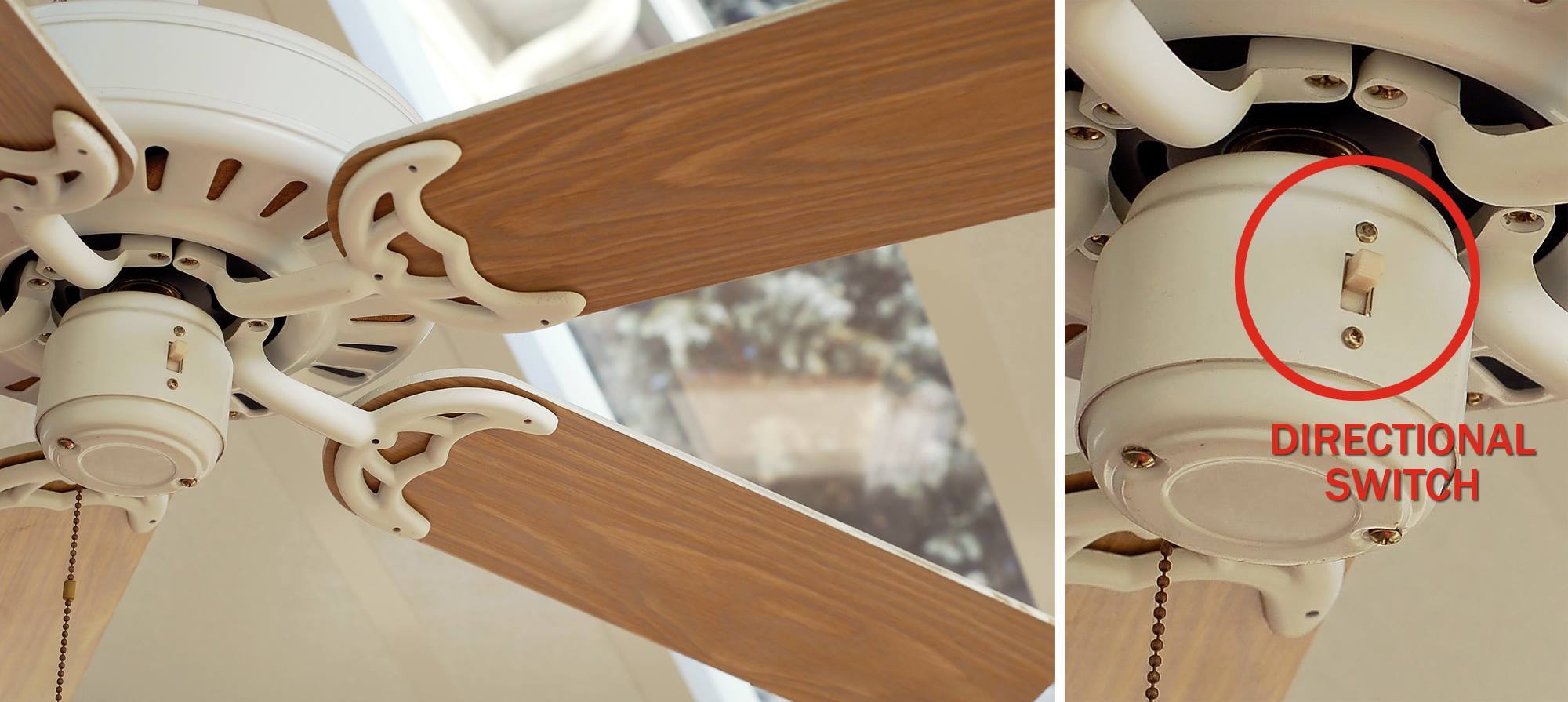With cooler weather back in the forecast this weekend, now is the time to switch the direction of your ceiling fan to receive maximum performance and energy savings.
In the winter, a ceiling fan should operate at a low speed in the clockwise direction. This produces a gentle updraft, which forces warm air near the ceiling down into the occupied space.Once the summer heat has arrived, however, the ceiling fan should be switched back to a counterclockwise direction. With this setting, you should feel a cool breeze while standing directly under the ceiling fan. The airflow produced creates a wind-chill effect, making you “feel” cooler.
How to reverse a ceiling fan:
1. Look at the current rotational direction of the blades and determine if you need to change the blades’ direction.
2. Turn off the ceiling fan.
3. Wait for the ceiling fan blades to completely stop rotating.
4. Find the switch that reverses the direction of the blades’ rotation. Conventional ceiling fans have a switch on the housing assembly near the pull string or cord (see photo illustration). Some modern ceiling fans have remote controls that include a button for reversing blade rotation.
5. Push or flip the switch to the opposite position, reversing the direction. Turn the ceiling fan back on and proceed with using it in your home to circulate air.Studies show that running your ceiling fans during the cold winter months can help you save as much as 10 percent on your heating costs. Try it today!


